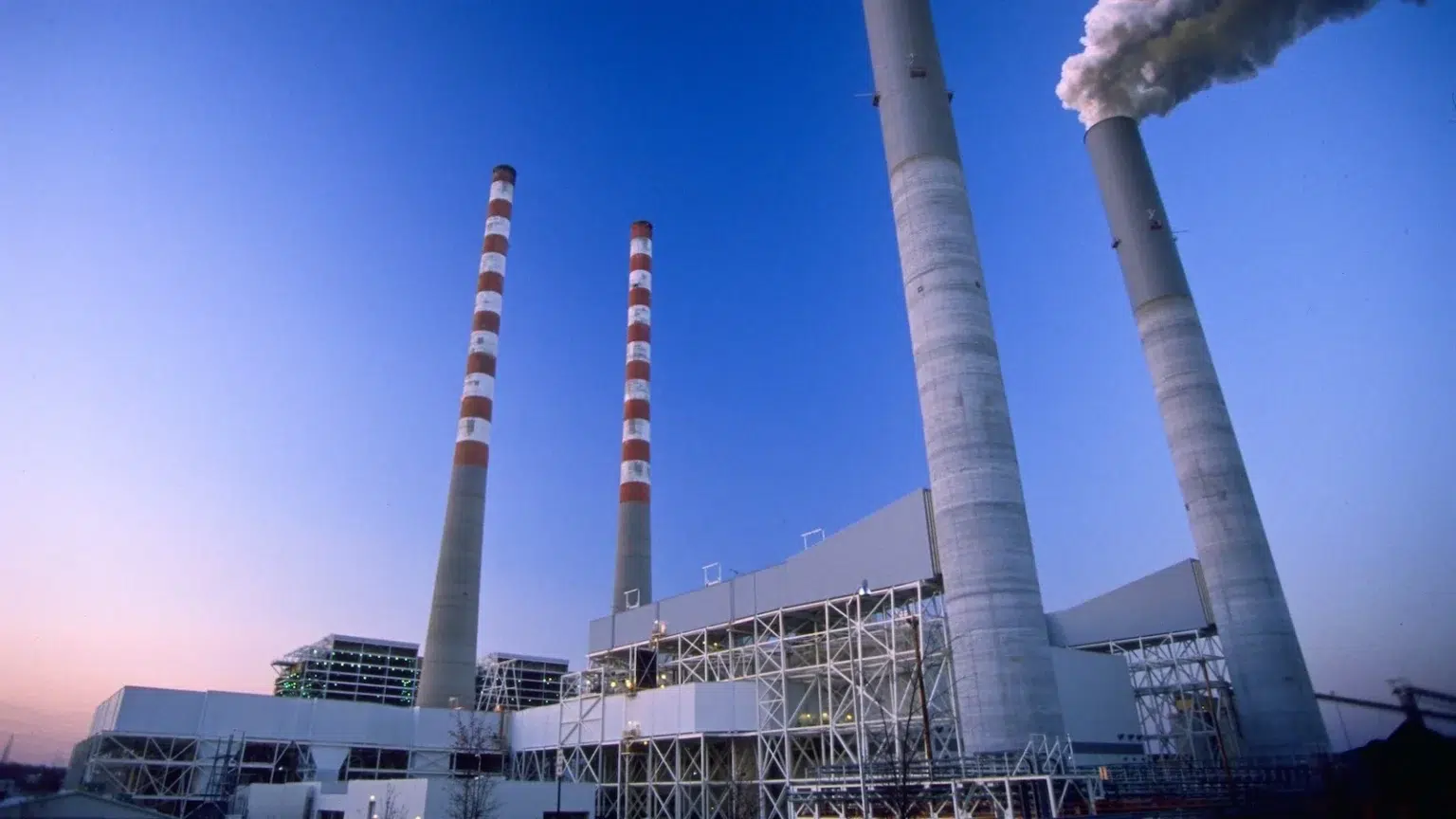By Katie Myers, Grist. This story was originally published in Grist, and is republished here as part of Covering Climate Now, a global journalism collaboration strengthening coverage of the climate crisis.
Austin Wall was attending an environmental law conference at the University of Tennessee not long ago when, during a discussion of natural gas pipeline projects, a map appeared on the screen and gave him a surprise.
“I’m like, hold up, that Google Maps looks really familiar to me,” the 25-year-old law student said. “I could find my family’s farm on that map.”
Wall’s family lives in rural Dickson County, and its ranch lies within a 10-mile “blast zone” of a pipeline planned for north-central Tennessee. That got his attention. A pipeline exploded in that area in 1992, scorching more than five acres of forest, and a similar disaster could decimate the family’s livelihood raising cattle. But what really dismayed him is why the Tennessee Valley Authority wants to build the project: It plans to replace two coal-fired power plants with natural gas facilities.
The TVA is the nation’s largest public power provider, serving a wide swath of seven southern states, including most of Tennessee. Its fleet of 29 dams, 14 small “solar energy sites,” and 25 power plants generates the electricity that it sells to 153 regional utilities. The agency once boasted 14 coal-fired power plants, including one that was for much of the 1960s the world’s largest. Today just five remain, and the agency wants to replace two in Tennessee, one in Cumberland and the other in Kingston, with gas-powered plants. Doing so all but commits its customers to fossil fuels for the next 25 to 30 years, obliterating the utility’s chance of reaching any national or international, or even its own, climate goals.
Despite that, the TVA argues that building the capacity for solar and wind energy takes too much money and time to allocate all at once. Its officials insist that methane burns cleaner than coal, and they echo a common argument in claiming that it provides a tidy bridge between coal and truly renewable energy. Some, including the Environmental Protection Agency, oppose the plan for climate reasons, arguing that, in addition to carbon dioxide, the plant will emit methane, an even more powerful greenhouse gas. Others worry about how the pipelines needed to serve the new operations will impact their communities.
Wall joined other opponents of the plan who gathered earlier this month in a cavernous middle school gym in Norris, Tennessee, for a TVA board meeting. Together, they told the agency exactly what they thought of the plan. Wall sees the plant slated for Cumberland as part of a history of exploitation throughout the rural South.
“It’s rich people coming in and stealing our stuff and then leaving.”
– Austin Wall
“It’s rich people coming in and stealing our stuff and then leaving,” he said. “And I think that when you look into it, it’s a cycle that TVA has the opportunity to stop or to break.”
The TVA bills itself as a proponent of sustainability, and the meeting was thick with branding proclaiming that. A video clip playing on a screen near the podium celebrated a utopian vision of the agency’s past and present: happy workers, hydroelectric dams, nuclear power plants, and glittering solar fields. “We made clean energy long before anyone asked us to,” the narrator intoned over the sound of an acoustic guitar.
Yet just 3 percent of the TVA’s energy portfolio comes from wind and solar alone. If you count hydropower and nuclear as clean energy sources, as the TVA does, that number bumps up to about 50 percent. Gas supplies another 22 percent. “I want the word sustainability to be synonymous with TVA,” Lyash said during the meeting.
It’s hard to square that position with the agency’s plans for the Cumberland and Kingston power plants. Each is a juggernaut. Cumberland, the largest remaining coal plant in the TVA’s fleet, generates enough power for 1.1 million homes each year, according to the agency, and Kingston, about 700,000. These two plants burned coal for decades, exposing the surrounding low-income, rural communities to carbon, sulfur dioxide, and other pollutants. In Kingston, mismanagement of the plant’s massive coal ash landfill resulted in a notorious billion-gallon spill in 2008. Each is reaching the end of its service lifespan, and, combined with federal pressure to reduce emissions, no longer make economic sense to repair and run. Though bulldozing the units remains an option, the TVA believes a conversion to methane may give these plants a new life and benefit the climate.
“Replacing retired coal units with natural gas will reduce carbon emissions from coal chains by nearly 6 percent and accelerate the retirement of that coal,” Lyash said of the plan.
Of course, replacing those plants with renewables would reduce carbon emissions even further. The TVA is taking a step in that direction by replacing a coal plant in Paradise, Kentucky, with an operation that will combine solar and natural gas.
The agency considered a solar buildout for the Cumberland coal plant, but ruled it out on the grounds that it would require too much time and money. It also weighed distributed solar development as an alternative for the Kingston plant, but drafts of the plan indicate gas remains the preferred alternative there, too. This comes after years of slashing solar incentives and disinvesting in energy efficiency programs.
The favoritism mirrors a regional trend as Tennessee doubles down on natural gas. State lawmakers are pushing a bill that reclassifies it as clean energy. This follows years of other fossil fuel-friendly legislation, like a bill that explicitly blocks some local governments in the state’s majority-Democratic urban areas from fully decarbonizing. As usual, the argument follows these lines: You can’t see the sun for twelve hours a day, but gas plants can run anytime you need them.
The Biden Administration disapproves of the TVA’s plan for Cumberland and Kingston, noting that the only way it would achieve net-zero emissions by 2050 would be to institute expensive carbon capture technology, which the TVA did not factor into its math, or bring the plants offline early, leaving them a stranded asset. However, the EPA did not challenge the decision.
Some commenters thanked the TVA for keeping the lights on, but others challenged the gas buildout, saying the agency reached a crossroads, took a look each way, then picked the wrong direction. Some called on it to immediately change course and cancel its plans.
“If you don’t move now, this will not happen,” one commenter told the board. “We are taxpayers who contribute to every TVA salary.”
That isn’t actually true, although it’s easy to see why people might think it is. Tax dollars do not support the TVA, though they once did, at its outset under the New Deal. Today the agency is a corporation run by the United States government, with leadership recommended by the President of the United States, and confirmed by the Senate, to serve five-year terms. Its board meetings are open, and decisions subject to public comment. But lately, some believe its decision-making has been less than democratic, and that TVA no longer feels beholden to those it serves.
“It’s a corporation clothed with the power of government,” said Amanda Garcia, a lawyer with the Southern Environmental Law Center. The Center, with other regional organizations like Appalachian Voices and the Tennessee Sierra Club chapter, has thrown its energy into pushing TVA away from methane. Part of the difficulty, she said, is the TVA is not regulated by the state Public Service Commission – it’s essentially an unregulated monopoly. That exempts it from the sort of oversight experienced by, say, Dominion Energy, which saw the South Carolina Public Service Commission reject its long-term plan in 2020, citing a need for lower-carbon options in its energy mix. Furthermore, utilities under TVA jurisdiction have negotiated what are called “never-ending contracts,” or perpetual power supply agreements that are difficult to exit. That lack of accountability and flexibility appears to be keeping the TVA on the fossil fuel train, Garcia said.
“I think there’s a fair amount of, just, institutional inertia going into planning for the future,” she said. “And a desire to continue to be able to control the electric system in a way that is inconsistent with really where we need to be moving from a climate perspective.”
Garcia and other climate activists believe Lyash, whom the board named CEO in 2019, holds outsized power over decision making. President Trump, who fired two of the board’s nine members over their pay and other issues, threatened to fire him for the same reasons. He relented, and the remaining board members voted in 2022 to hand Lyash the final call on a wide range of matters, including the last word on the gas plant buildout. After President Biden appointed four board members, the panel in May took back that authority, but ditching coal for gas in Cumberland and Kingston remains the official position. The TVA has refused to make board members available for comment, leaving that task to Lyash. TVA did not respond to an additional request for comment by the time of publication.
“It’s a corporation clothed with the power of government.”
– Amanda Garcia, Southern Poverty Law Center
In an interview, Lyash told Grist that he wants the plants to eventually serve as backup energy sources, in the form of blackout-preventing “peaker plants,” that would provide power during high demand as the agency brings more renewables online. “If you wait for the perfect, you’ll be waiting a long time,” he said.
He also cited his oft-repeated mistrust in the reliability of wind and solar in defending the plan.
“If we could build 100 percent solar and operate a reliable, affordable system, we would have no reason not to. But we can’t. But that isn’t to say that doesn’t diminish the role of a solar bill on the portfolio,” he said, referring to the proportion of gas and solar in the energy mix. “The gas bill, you can’t take it in isolation. You have to think of it as part of the overall system.”
Tennessee’s larger cities, though, don’t think they have the time to wait on TVA’s creeping energy transition. Memphis Light, Gas and Power recently backed out of its “never-ending” 20-year contract with TVA, citing a desire to integrate more renewables and lower residents’ utility bills. Nashville Mayor John Cooper personally urged the TVA to scrap its Cumberland gas plant idea and start over.
“Even if TVA decides to retire the gas plants early and switch to renewables, they will pass the cost of the plant onto Nashville customers, consolidating the cost of a decades-long investment into customer electricity bills over just a few years,” Cooper wrote in a public comment addressed to the TVA. “Leaving Nashvillians on the hook for further pollution is unacceptable, whether the plants operate for years or are retired quickly.”
Climate activists and community leaders hope the conversions to gas are not a done deal. The Kingston plan was only just offered for public comment, and a lot can change before it is finalized in the spring of 2023. The Cumberland gas plan was wrapped up in January, but environmental advocates hope increased agitation over the planned pipeline could delay or even kill it, since that project requires an EPA-approved plan. A few bureaucratic steps remain before the future of the two power plants is set, and the public can still weigh in on it.
Austin Wall doesn’t want a gas plant, but also doesn’t want to see the TVA leave Cumberland. On the contrary. The plant provided 265 well-paying union jobs. But the 35 permanent positions expected from the gas buildout feels like a pittance in comparison, not to mention the public health hazards it will bring. Wall would rather see the agency support his community with renewed investment in energy efficiency and home upgrades, along with the construction of solar and wind infrastructure. That, he says, both help rural ratepayers and provide more opportunity for carpenters, electricians, and others in skilled trades.
A recent report by nonprofit organization Appalachian Voices suggested that as many as 739 direct, long-term jobs could be created in Cumberland and the surrounding area with investments in decarbonization, particularly in the energy efficiency sector.
“We’ve given up a lot of our land and a lot of our health and well being for this coal plant,” Wall said. “And we’d like to see a little bit of it in return.”
Subscribe to our newsletter
Stay up to date with DeSmog news and alerts







